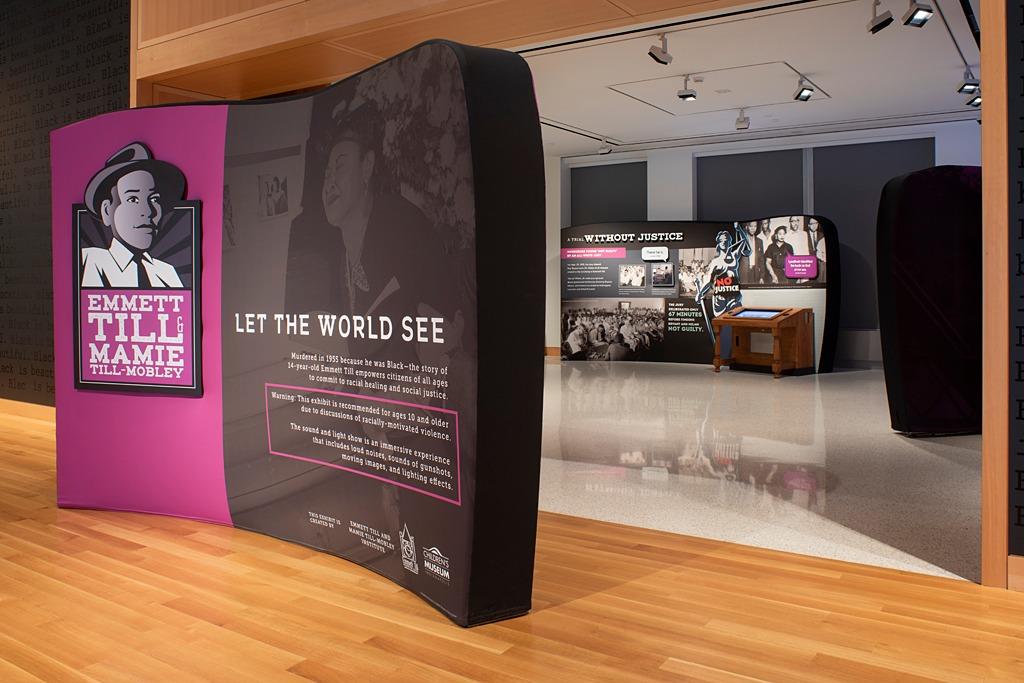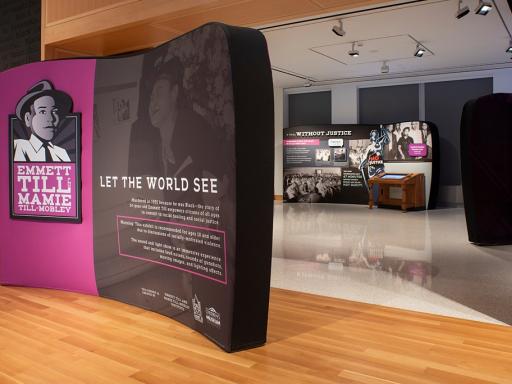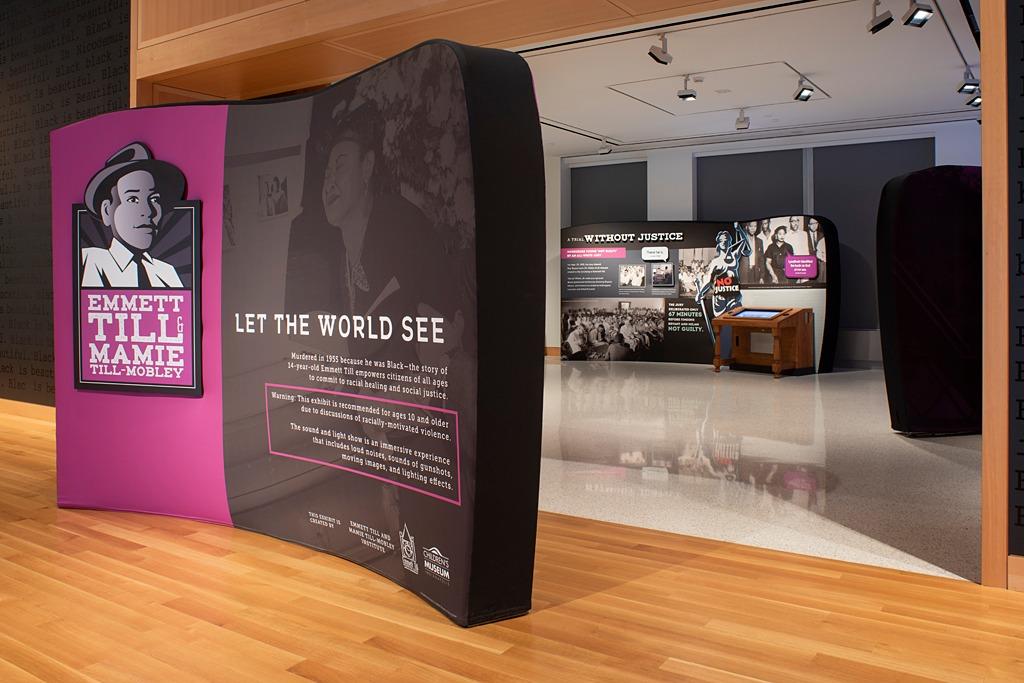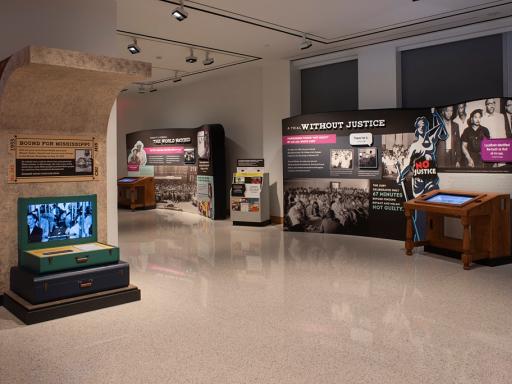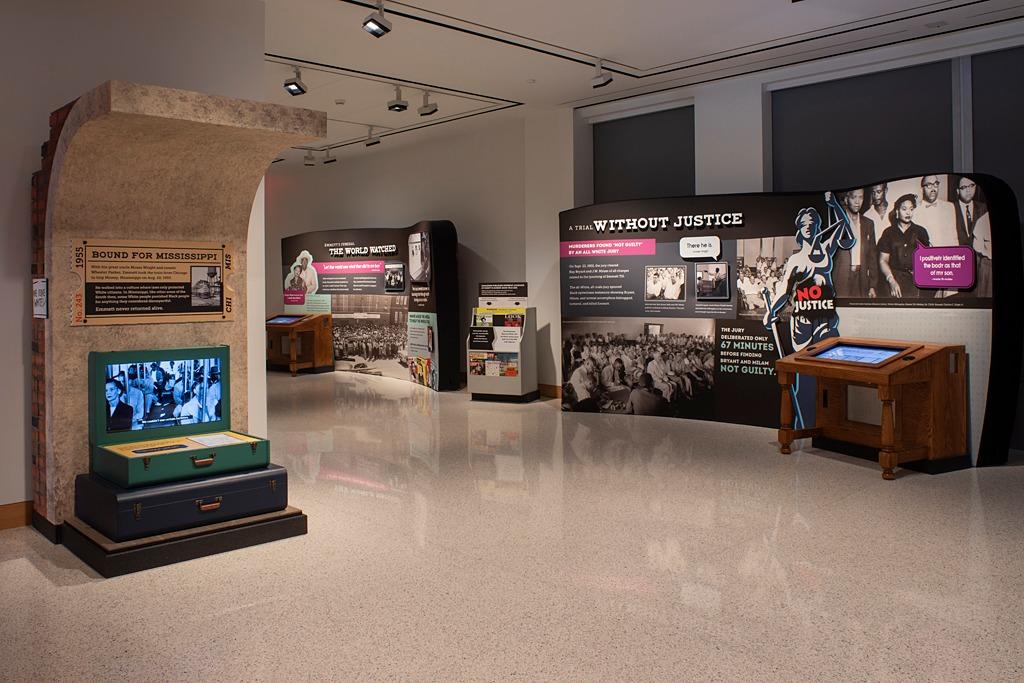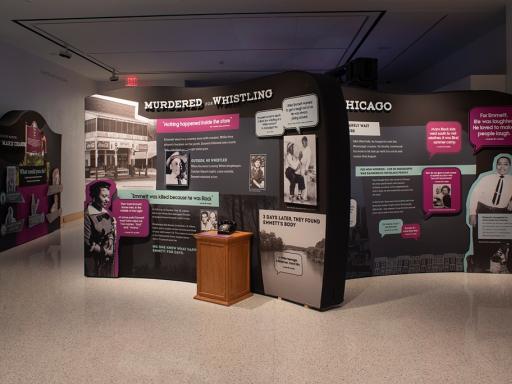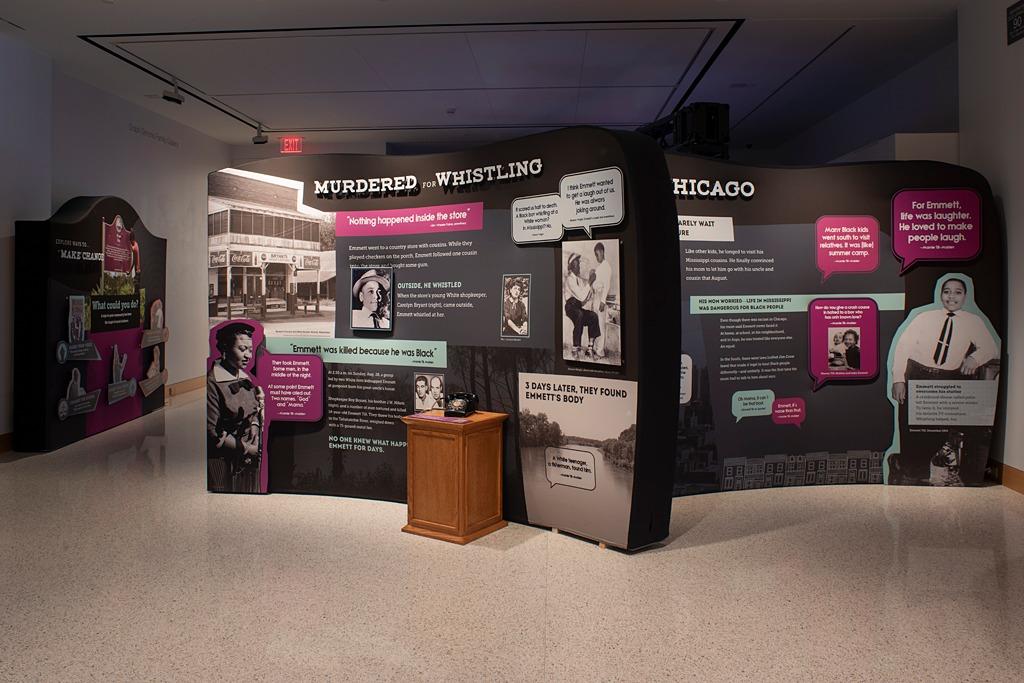Emmett Till & Mamie Till-Mobley: Let the World See
Dolph Simons Family Gallery, Estelle S. and Robert A. Long Ellis Foundation Gallery
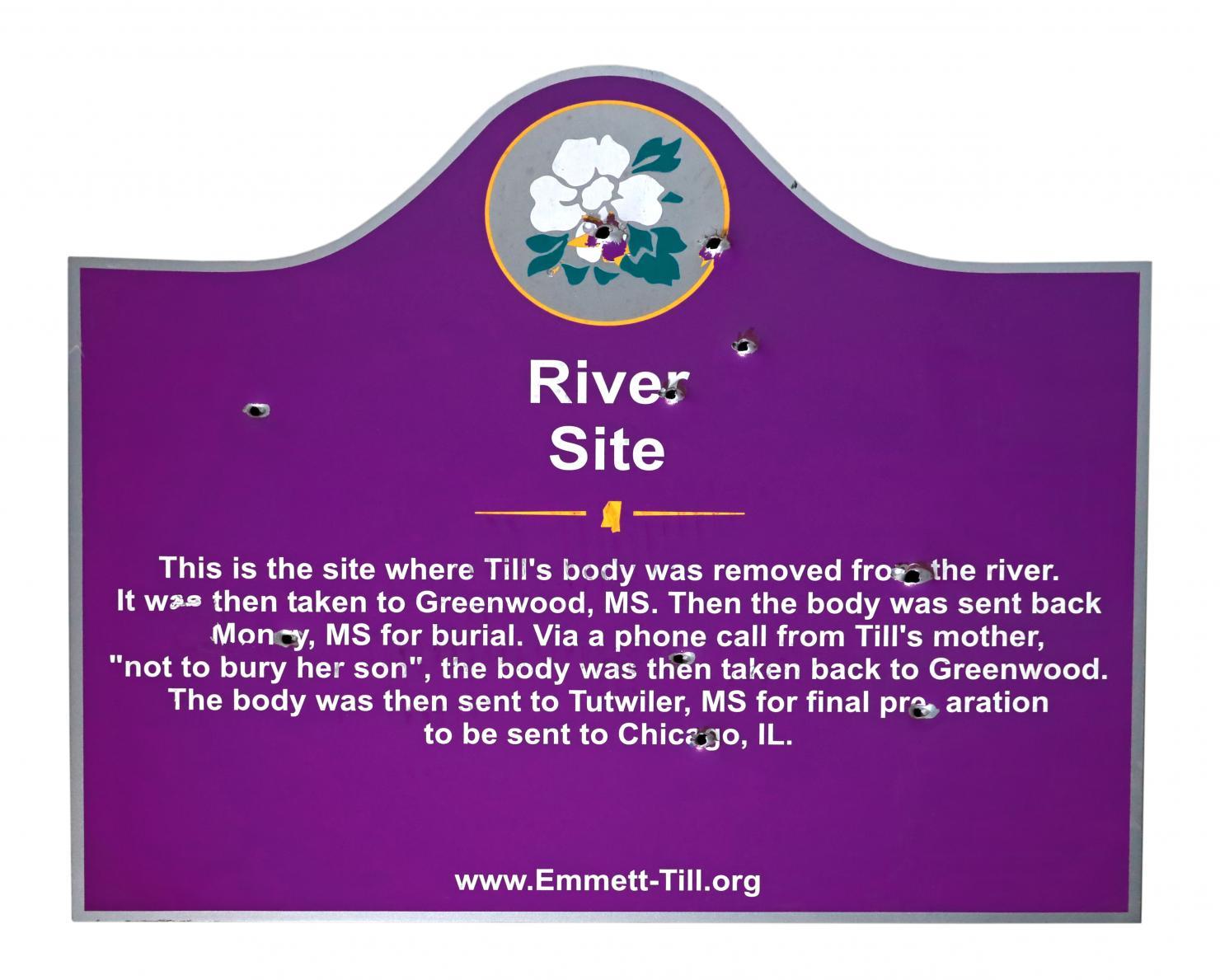
Supporters
This project was made possible in part by The National Endowment for the Humanities: Democracy demands wisdom, the Maddox Foundation in Hernando, MS, The Institute for Museum and Library Services [MH-249226-OMS-21], and The Historic Preservation Fund administered by the National Park Service, Department of the Interior [15.904].
This exhibition and related programming are co-sponsored by the KU Office of Diversity, Equity, Inclusion, and Belonging; the KU Office of the Provost; the KU Office of Research; the KU Hall Center for the Humanities; KU African and African-American Studies; KU Department of Communication Studies; the Langston Hughes Center; KU Student Senate; the National Endowment for the Humanities; and Humanities Kansas, which connects Kansans with stories, ideas, and each other to strengthen our communities. Community partners include the Lawrence Chapter of the NAACP, the NAACP Youth Council of Lawrence, B.L.A.C.K. Lawrence, the Lawrence/Douglas County Community Remembrance Project Coalition, and Justice for Wyandotte. Additional funding comes from Friends of the Art Museum, the Linda Inman Bailey Exhibitions Fund, and Duane Morris LLP.
Exhibition Resources
Explore this exhibition in our online collection to find a complete object list, label text, and additional images.
